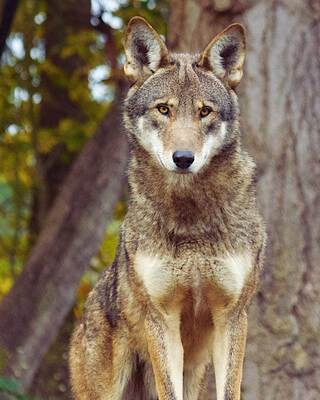
Red Wolf
The red wolf is one of the most critically endangered species in North America, with only about two dozen wild individuals left in the Outer Banks region of North Carolina. Historically, these wolves roamed across much of the eastern United States, from New York all the way down to Texas. However, habitat loss and human persecution drastically reduced their numbers, leaving only 14 wild red wolves in the 1970s, all confined to southeast Texas and southwest Louisiana.
In response to this alarming decline, the U.S. Fish and Wildlife Service intervened by bringing the remaining wolves into human care to begin a breeding program. This program eventually evolved into the Red Wolf SAFE (Saving Animals From Extinction) program, which aims to save the red wolf from extinction.
Today, there are about 240 red wolves managed across 49 Red Wolf SAFE facilities in the U.S. The goal is to increase this number to 330 individuals in human care, which will help facilitate reintroductions into the wild and promote the growth of the wild population. Through this program, red wolves are gradually being returned to their native habitats, giving them a chance to thrive once again.
In 2022, our zoo made significant strides in supporting red wolf conservation. With the help of a grant from the C2S2 (Conservation Centers for Species Survival) Red Wolf Recovery Program, as well as contributions from the Helen J. Prince Foundation and Williams, a clean energy infrastructure company, the zoo created two new habitats specifically for red wolves. These new habitats are crucial in supporting the breeding and care of red wolves, ensuring that this critically endangered species receives the attention and protection it needs.
Williams has been a key partner in the zoo's efforts, not only helping with the red wolf program but also supporting conservation initiatives for other species, including the Eastern hellbender salamander and pollinators. Their continued support plays a vital role in preserving biodiversity and the health of ecosystems.